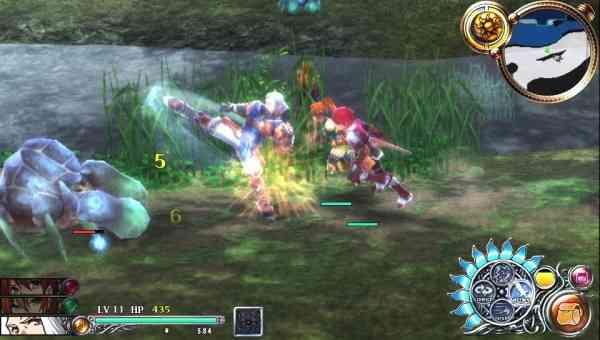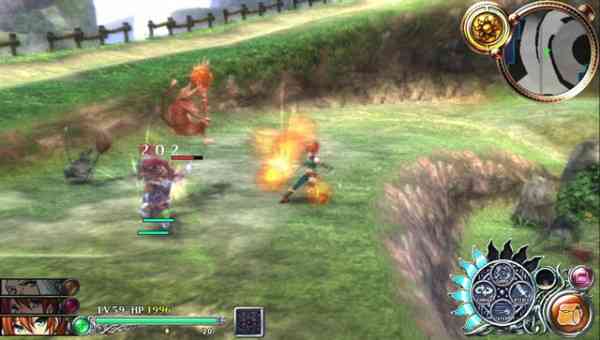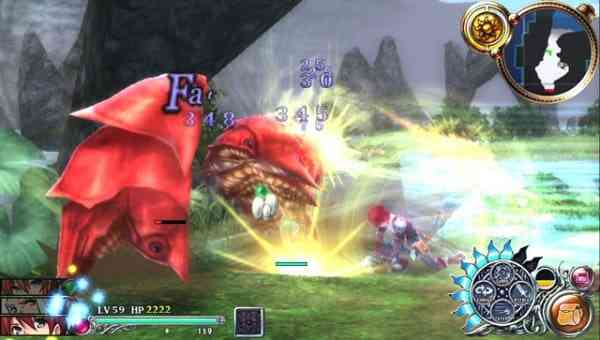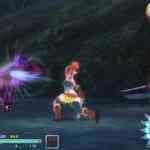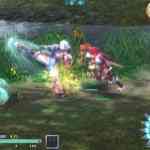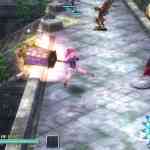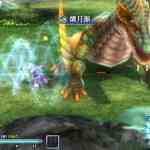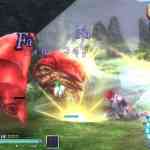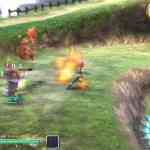My first experience with any sort of RPG was with the famed Ys series. Pronounced “Eese”, the first and second games were a pack-in with NEC’s ill fated TurboDuo. It was here that I learned how to level up using magic and skills bestowed on a young Adol. I quickly fell in love with the story and graphics at the time and I spent many hours trying to get Adol to his peak. While a few incarnations and side stories of Ys have appeared on other consoles and handhelds, it wasn’t until XSeed and Falcom decided to remake them in earnest and release them in North America on the PSP that they got new exposure. Now comes an updated and somewhat re-imagined Ys IV, aptly titled Ys: Memories of Celceta, for the PS Vita, which is perfect for some on-the-go gaming.
In typical RPG style the story opens on our hero Adol waking up in the middle of the street without any memory of how he got there and why he finds himself in the situation he is in. He is helped by some of the local people, and is guided by a person that claims he can help regain his lost memories. Hence starts the story, and journey, of Ys: Memories of Celceta.
Fans of the long running Ys franchise will probably remember the battle system used in Ys: Memories of Celceta. It closely resembles the control scheme of Ys VII, making the game extremely fast on action and requiring you to utilize your reflexes with precise timing. The bulk of your duties gave you controlling up to three characters on screen, attacking or defending. Sometimes you may have to forgo attacks for defensive manoeuvres like dashing or guarding around enemies, setting up for more devastating attacks. It can make for some really memorable battles especially with the number of huge boss battles contained in the game.
You can level your characters skills (SP) by defeating enemies you encounter. Incidentally, using SP also refills your EX meter which when filled can unleash huge attacks. I found the system to be quite easy to use and monitor, with great speed in the heat of battles. What I didn’t like was some of your crew can take huge amounts of damage because of their abilities to fight, meaning the AI is a bit slow on the draw at times.
If that wasn’t enough, the game also utilizes the Flash Guard and Move. This mode essentially makes the party invincible for a few seconds before oncoming attacks. It can also set you up for critical hits on the enemy if your timing is perfect. I found it pretty effective on slower enemies but they are few and far between, so it is most advantageous on the bigger heavier boss figures. Timing is the key here and button mashing may not always work.
Eventually, you can end up with six party members and swapping them in and out is an easy affair thanks to the Vita’s touch screen. Instead of fumbling with buttons you can navigate the menu with simple touches which I found to be an excellent feature. You can make changes on the fly and be back into the battle in seconds, fast and efficient.
In addition the rear touch screen also has a function, albeit very limited. The screen allows you to switch between attack or evade by moving your fingers towards the center or to the edges of the rear touch screen. With everything happening on the main screen the movement is initially a bit tough to pull off, but I soon got accustomed to it with minimal effort. The rear touch screen has no other functions that I could find.
The game is fairly easy for the first 5-7 hours but the gameplay difficulty ramps up soon after this point verging on cheap at times. I found myself repeatedly frustrated when attacking various enemies who would block with repetition and ease and in turn kick me while down. They are ruthless at times with damage inducing hits ringing up while you are on your butt so to speak.
The boss battles in Ys: Memories of Celceta are almost epic in style; most of them can fill the entire screen. This part of the game reminded me of the older games in the Ys series as I found myself trying to knock down their massive health with a puny little Adol, it is certainly daunting. If you can figure the particulars of a boss’s pattern of attacks you should be able to dispatch them with little trouble. Another item that had me thinking of the games of old was how the boss’s attacks become stronger the more you knock down their health meter, and in some cases they became faster so standing around is almost certain death.
I really enjoyed the battle system employed by the game, but it is also helped with the Vita’s impressive control scheme. The touch screen is fantastic but the dual analog sticks really make a difference. The original PSP nub was horrible while the PS Vita’s dual sticks really can make games easier, this one included.
The game packs in about 20-30 hours of gameplay with some extra stuff unlocked after beating it. The new Game Plus mode is where you can play through the entire game again without having to do all of the plot related items again. You can also do this in any difficulty mode which can be refreshing in itself. Another unlock is the time attack mode where you can set a party up against any boss with any equipment you desire. It is time for payback since you can go it alone with just Adol and no party to tag along. This truly is like the games old where it was just Adol fighting it out. This mode has quickly become one of my favorite modes in the entire game, well worth the effort to unlock it.
I must say that the graphics engine is a bit of let down in my opinion. I was a bit shocked at some of the issues I saw while playing Ys Celceta. While not an ugly game in the very least, as it is extremely vivid and colourful with some excellent animation and cut-scenes throughout, I took issue with the inconsistent framerate in a lot of areas and collision detection issues between characters. Adol moves very much like a robot, stiff and quick, as if frames of animation were missing. In some places it looked as if he was floating along while shuffling his feet. Some of the games environments are well designed and only to have muddy and unfocused textures mired in them; very disappointing indeed. The portrayal is quite impressive but the fidelity is certainly not up to what the Vita can do. The menu interface is downright beautiful though, not only in appearance but easy to navigate, clean aesthetically, and uses an eye catching graphical flair.
The soundtrack is a bright spot in the game using an assortment of music from many different genres. Most battles engage with a heavy rock guitar driven sound that rises and falls as the battles play out. But there are also moments of soft classical symphonic passages that help with the games atmosphere. The audio is made even better with excellent voice work throughout the game, although as with most RPG’s it can be a bit cheesy for the lack of a better term. Overall the audio in Ys Celceta lends to the story more then it detracts.
For those looking for collectible edition of this game, there is an “Uber” Silver Anniversary Edition that includes maps from all the games, a CD soundtrack, an art book, and a compass. It’s a pretty skookum collector’s edition indeed.
Ys fans may have played better more memorable games in the Ys timeline, but Ys: Memories of Celceta on the PS Vita certainly deserves its time in the spotlight. The fast paced action and huge boss battles are well worth the price of admission. Where the game falters is its sub-par graphics, but this is a minor complaint as the story, which is presented in typical Ys fashion, should satiate most hardcore Ys gamers while enticing new gamers to join in the Ys fable.
